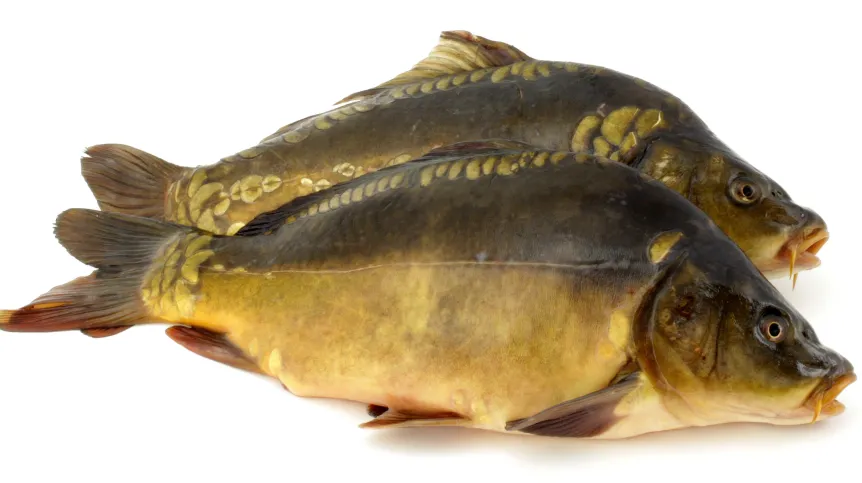
Carp and starch crisps are healthier and less caloric than regular crisps, and they contain omega-3 acids, minerals and vitamins. The new snack was developed by scientists from the Department of Fish, Plant and Gastronomy Technology of the West Pomeranian University of Technology. 'Karpioki' can be mass-produced.
Carp crisps, called +karpioki” by the Szczecin scientists, were presented last week at the Faculty of Food Science and Fisheries of the West Pomeranian University of Technology. 'The aim of our project was to use carp meat not only during the Christmas period, but above all to use what is left after filleting', says Grzegorz Tokarczyk, PhD, who heads the university’s Department of Fish, Plant and Gastronomy Technology.
A seven-person team under his supervision worked on an innovative technology for using the remains of fish fillets or carcasses. The researchers were looking for a way to use the meat found, for example, near the fish spine. According to Tokarczyk, the scientists were guided by the ideas of 'zero waste' and 'blue economy'. 'What comes from water, we process in its entirety into food', he says.
It turned out that the meat of Cyprinidae fish, as well as other species, is suitable for the production of crisps and puffs. All you need to do is mix it with starch (tapioca, not potato starch) and add a little salt and sugar. 'Plus water, so that the starch swells during heat treatment and binds the meat', Tokarczyk continues.
After forming into 'bars', the product is subjected to heat treatment (approx. 80 degrees Celsius) and then cooled. The next step is portioning (cutting into slices) and drying at approx. 50 degrees Celsius. In this form, carp meat products can be stored for many months or even years. They can be sold as a semi-finished product, to fry at home, or as roasted, ready-to-eat, packaged crisps.
The technology can also be used on an industrial scale, the scientist says, adding: 'The shape of the crisps, their colour and taste can be improved. ‘We have already carried out tests with natural dyes, for example turmeric’.
According to the scientists, they 'karpioki' chips are healthier than traditional crisps. They contain carp meat, i.e. easily digestible protein, as well as fish lipids, i.e. acids, mainly omega 3 (EPA - eicosapentaenoic acid and DHA - docosahexaenoic acid), minerals and vitamins. In 100 g of such a snack there are also - on average - several dozen calories less than in currently available crisps, as well as less fat, salt and carbohydrates.
The project 'Development of technologies for new and innovative carp products to ensure year-round sales of this raw material from aquaculture farms' was carried out over a 3-year period. The scientists received over PLN 2.1 million in EU funding from the European Maritime and Fisheries Fund for their research. The value of the entire project was over PLN 2.8 million.
The members of Grzegorz Tokarczyk's team are: Grzegorz Bienkiewicz, PhD, a professor at the West Pomeranian University of Technology; Iwona Adamska, PhD, a professor at the West Pomeranian University of Technology; Katarzyna Felisiak, PhD, Sylwia Przybylska, PhD, Agnieszka Hrebień-Filisińska, PhD, and Patrycja Biernacka. (PAP)
tma/ agt/ kap/
tr. RL













